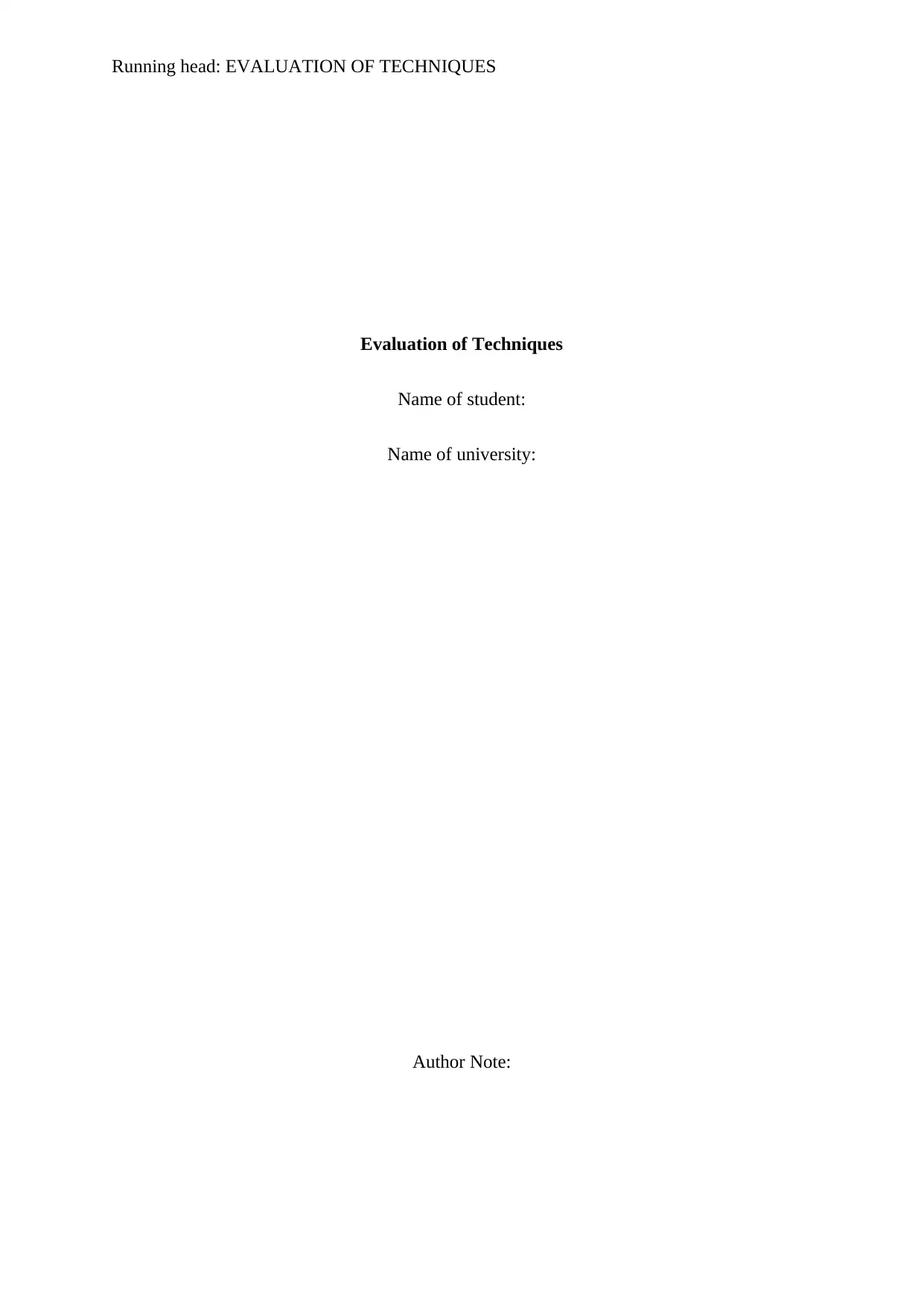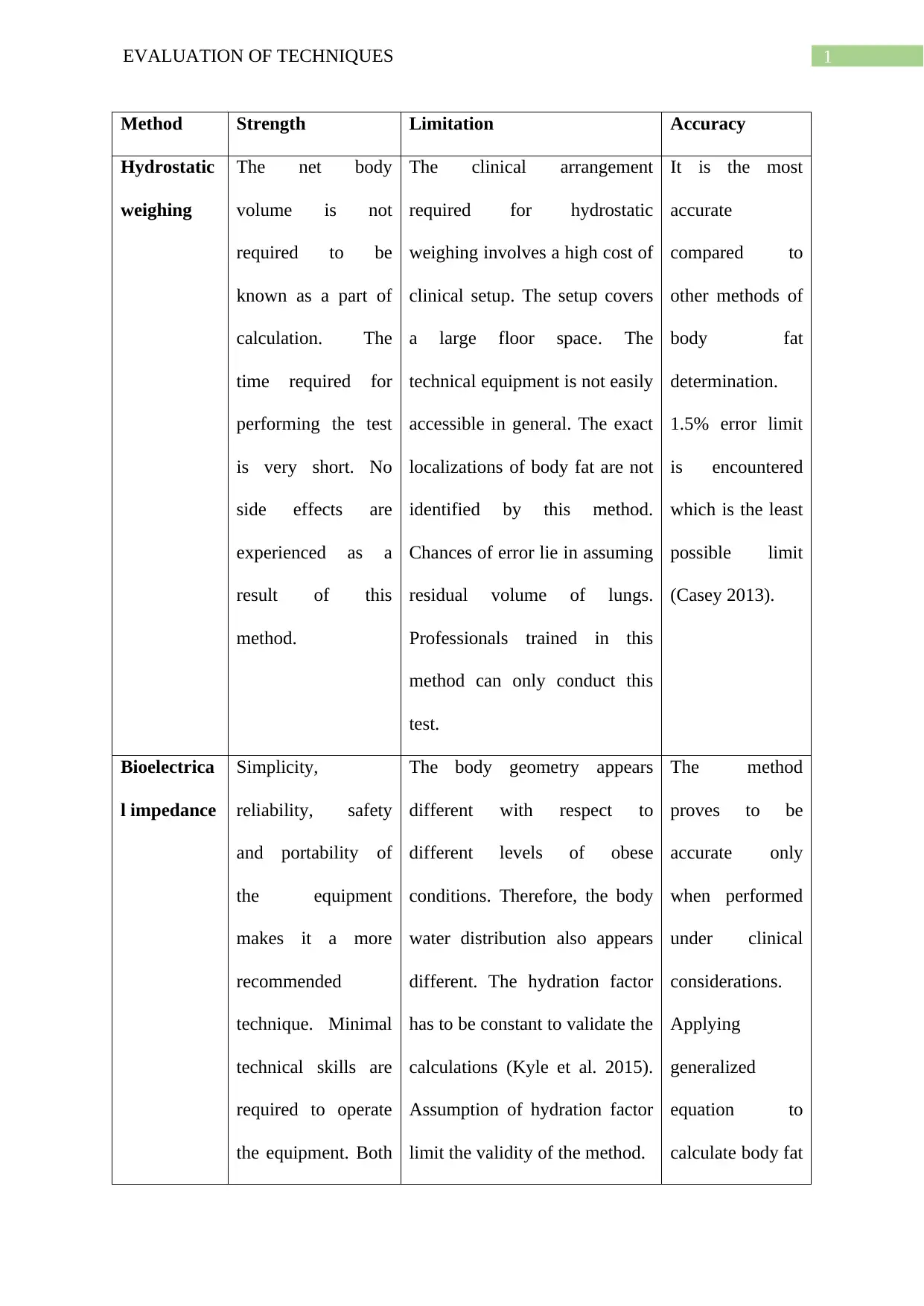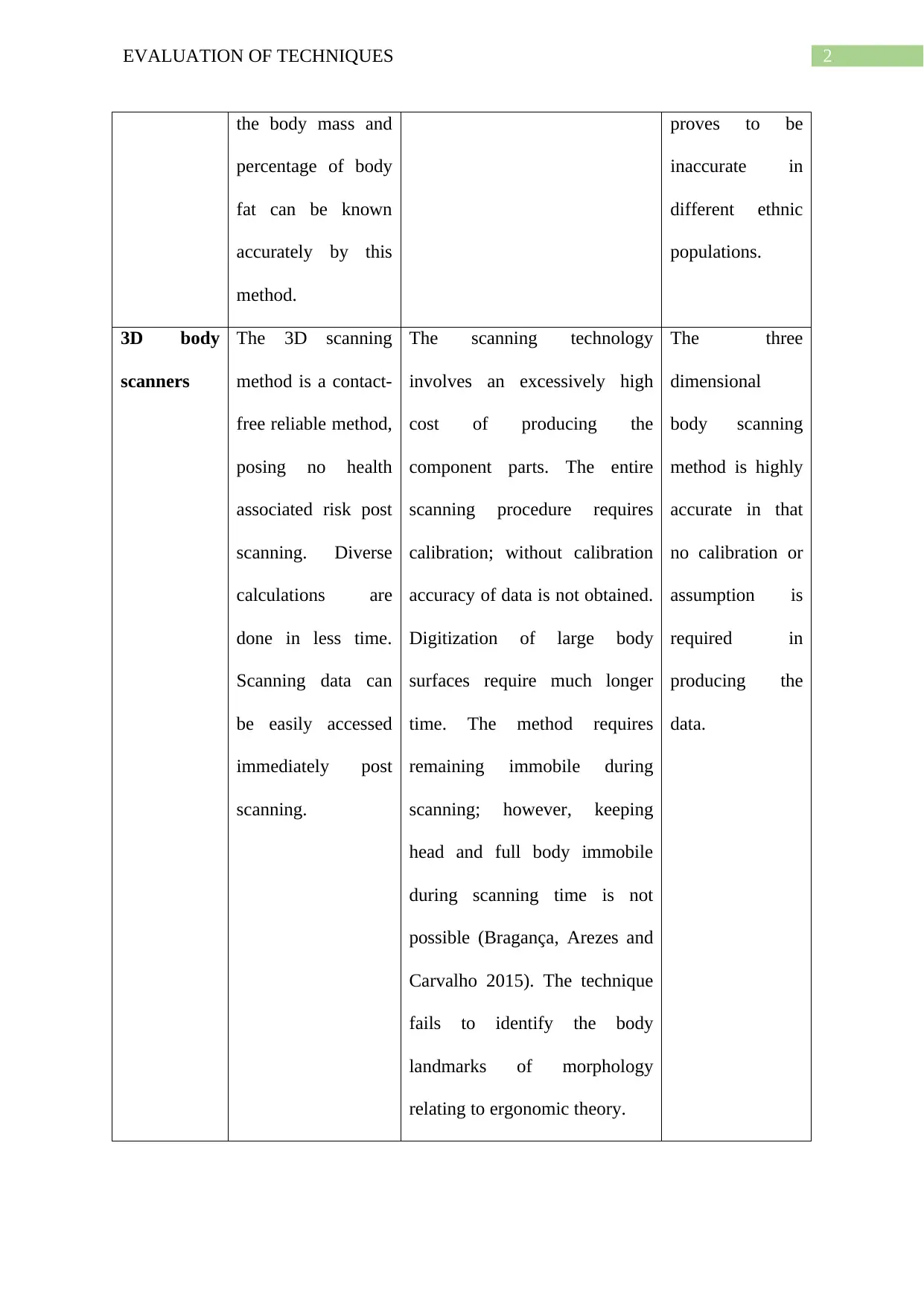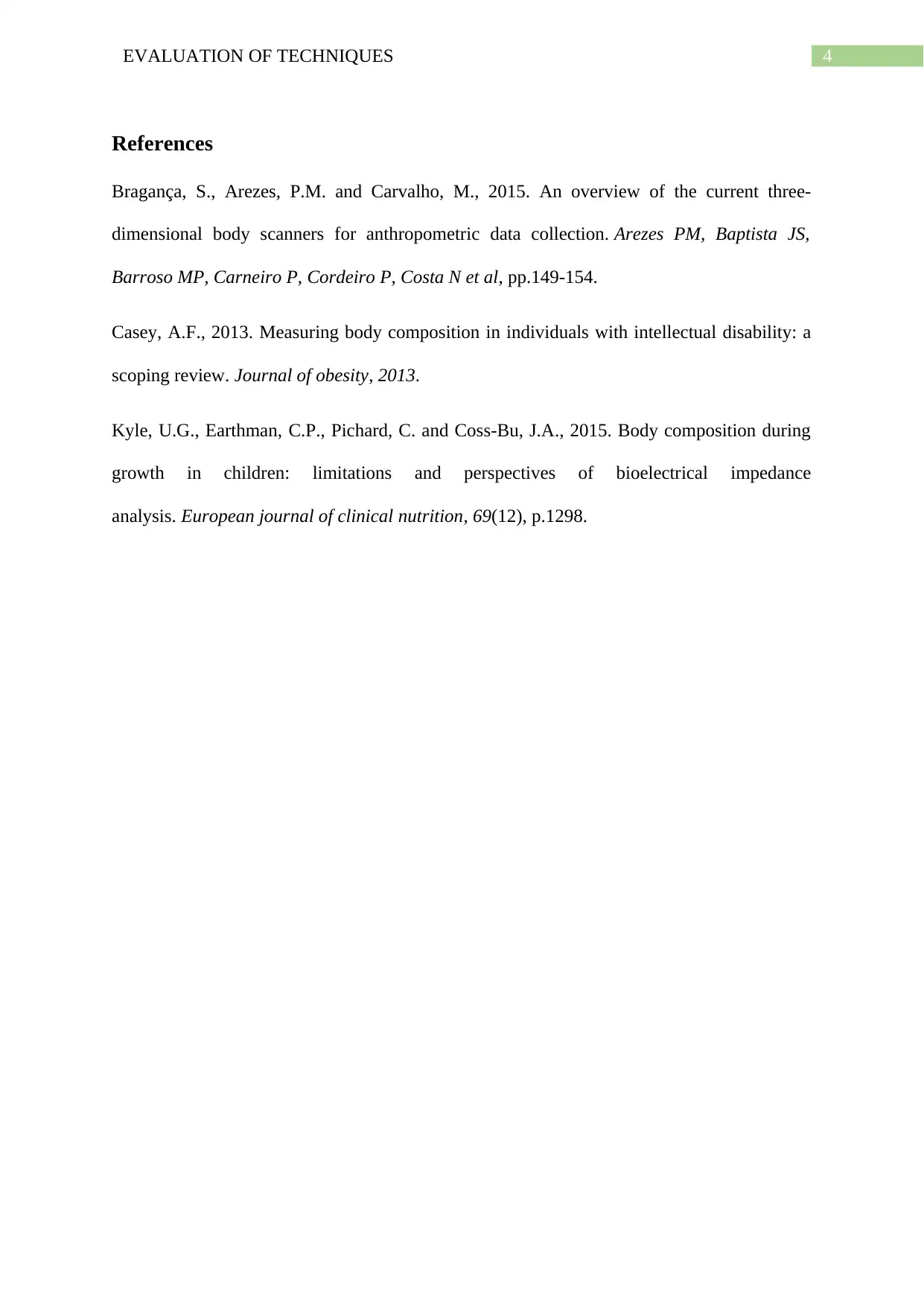Evaluating Techniques: A Comprehensive Analysis of Body Composition
VerifiedAdded on 2023/05/27
|5
|579
|53
Report
AI Summary
This report provides a detailed evaluation of various techniques used for body composition analysis, including hydrostatic weighing, bioelectrical impedance, and 3D body scanning. Each method is assessed based on its strengths, limitations, accuracy, and practical applicability. Hydrostatic weighing is highlighted for its accuracy but noted for its high cost and technical requirements. Bioelectrical impedance is praised for its simplicity and portability, though its accuracy is influenced by hydration levels. 3D body scanning offers a non-contact approach but demands careful calibration and can be time-consuming. The report concludes by referencing relevant studies, emphasizing the importance of understanding the nuances of each technique for effective body composition assessment. Desklib offers a range of study resources including past papers and solved assignments.
1 out of 5






![[object Object]](/_next/static/media/star-bottom.7253800d.svg)